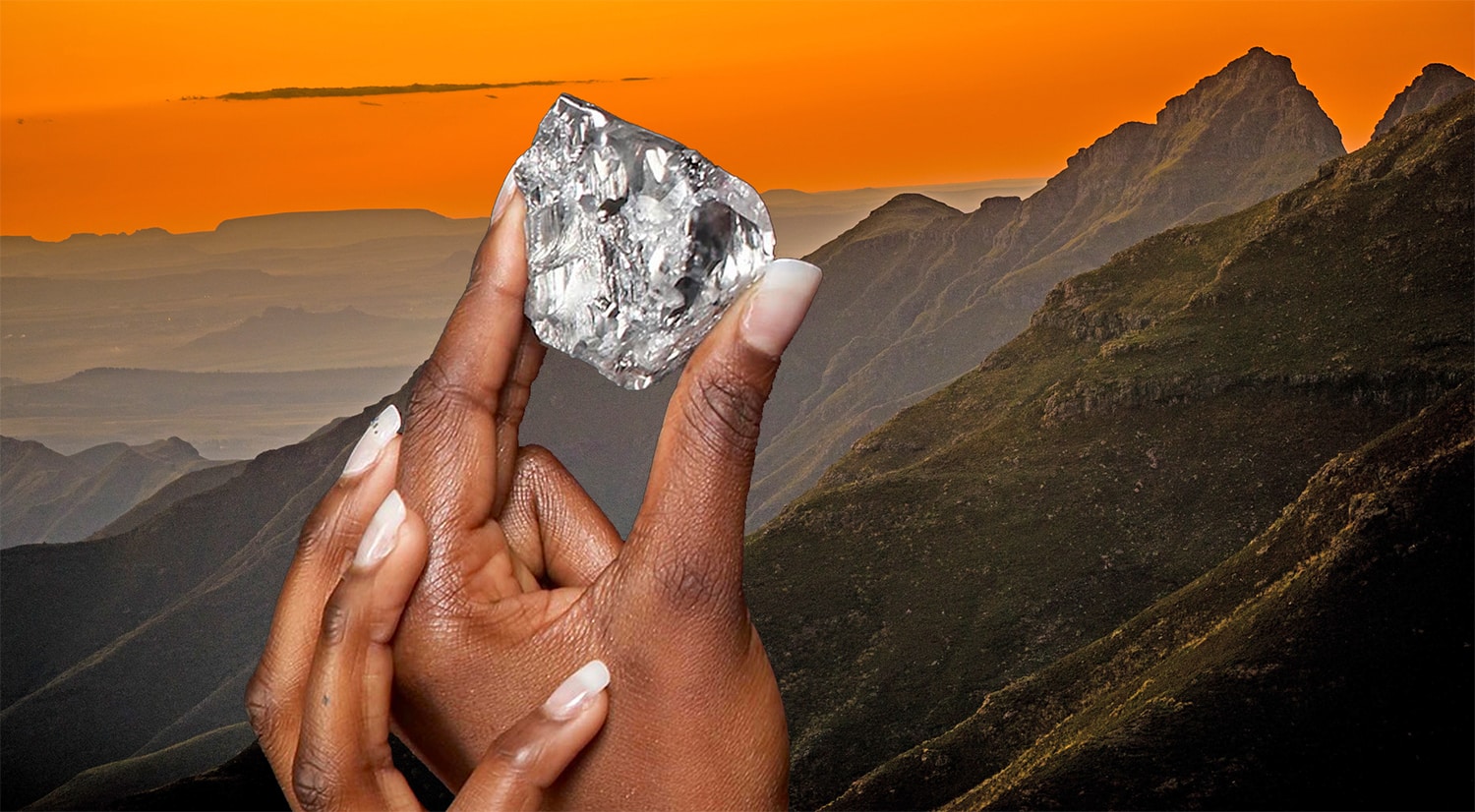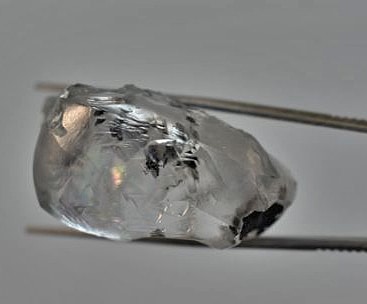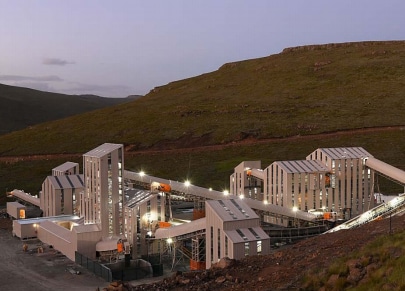Blog
Home » Diamonds blog » Lesotho Mines Continue to Yield Massive Diamonds of High Quality
Focus on

The 550-carat
Letšeng Star, seen against the background of Lesotho’s Maluti Mountains, where
it was discovered.
What also distinguishes Lesotho is that, over the past several years, it has been the location of a major percentage of the world’s most spectacular rough diamond discoveries. A good number of them were recovered at the Letšeng mine. These include the 910-carat Lesotho Legend, an exceptional D-color stone discovered in 2018; the 603-carat Lesotho Promise, which was discovered in 2003 and is still ranked in the top 20 of the world’s largest white diamonds; and the 550-carat Letšeng Star, discovered in 2011.
But it is not the only diamond mine in Lesotho that it is making presence felt on the world stage. Another is Mothae, just 5 kilometers away from Letšeng. It is 70 percent owned my Lucapa, an Australia-headquartered diamond company, with the remaining 30 percent held by the government of Botswana.
Lucapa specializes in high-value diamond production. Its second mine, Lulo, in Angola, has thus far produced 18 +100-carat diamonds and is one of the world’s highest average U.S. dollar per carat alluvial diamond producers. Lulo and Mothae together generate 75 percent of their revenues from the recovery of +4.8 carat stones.
MOTHAE MINE PRODUCES 2-15 CARAT D-COLOR STONE
On February 24 Lucapa and the government of Lesotho jointly announced the recovery of a 215-carat diamond from Mothae. It was the largest Type IIa D-color white diamond recovered at the site to date, the second +200 carat diamond and the fifth +100 carat diamond since commercial diamond mining operations commenced in 2019.
The 215-carat diamond follows the recovery of an exceptional 101-carat rough diamond diamond at Mothae in December 2020
“The continued recovery of large diamonds at Mothae validates the recent investment decision to expand capacity at the mine,” said Stephen Wetherall, the mining company’s managing director.
Lucapa currently plans to expand Mothae’s processing capacity by around 45 percent to 1.6 million tons of kimberlite ore per annum. This should be completed by the end of the first quarter of the year.

The 215-carat diamond discovered this February at the Mothae mine, which is the largest Type IIa D-color white diamond recovered at the site to date.

The Mothae mine, jointly owned by Lucapa and the government of Lesotho.
WORLD’S HIGHEST DOLLAR-PER-CARAT KIMBERLITES
The Maluti Mountains of Lesotho, where both Letšeng and Mothae are located, are home to the world’s the highest average dollar-per-carat kimberlite pipes in the world.
The two diamondiferous kimberlite pipes that today comprise Letšeng Mine were discovered in 1957, but were considered unattractive, With a grade of 0.88 carats per hundred metric tons of ore in the main pipe, and 2.6 carats per hundred metric tons of ore in the satellite pipe, they were considerably below what are usually considered economic, which is between 5 to 400 carats per hundred metric tons of ore.
It was not until 1967, when a local digger, Ernestine Ramaboa unearthed a brown colored diamond weighing 601.26 carats at the site that minds began to change. At the time it was reported to be the world’s 11th largest gem-quality diamond.
What it lacked in quantity, it may make up in quality – or at the very least in the size of the individual diamonds being discovered. Rio Tinto to conduct an in-depth examination of the Letšeng, but eventually declined the opportunity to build a mine. De Beers then made an offer, and in November 1977 an open pit mine was officially opened.
But despite some large stones being recovered, including a 130-carat stone in 1978, De Beers halted operations after just five years.
It would be 19 years before Letšeng resumed activities, and another 15 before it was joined by Mothae.
